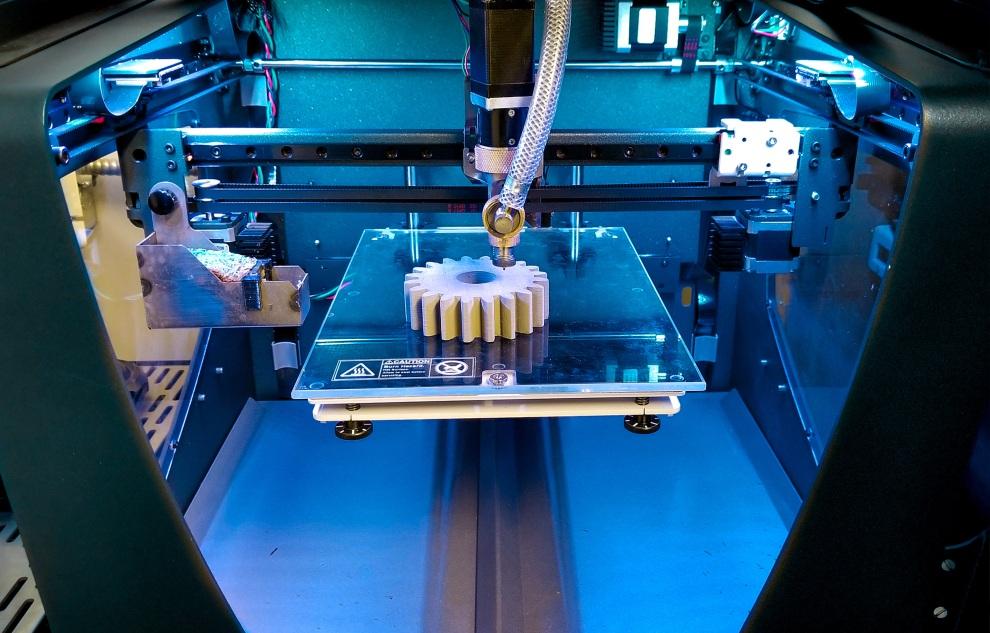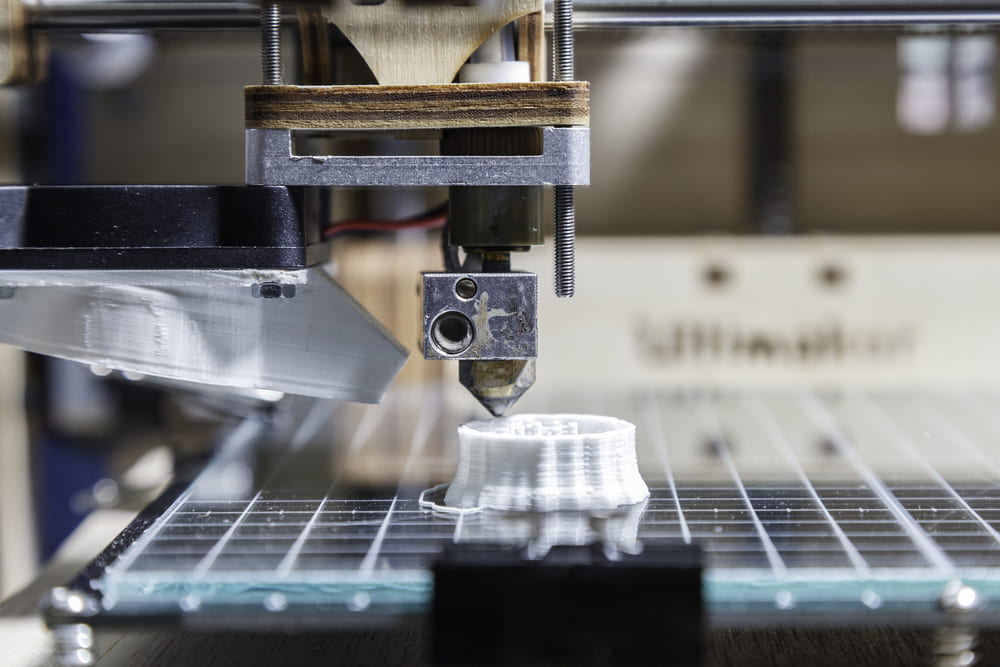


Views: 0 Author: Rachel Wynn Publish Time: 2025-05-27 Origin: Site











In recent years, metal 3D printers have emerged as a revolutionary force in advanced manufacturing. Unlike traditional subtractive methods, which cut away material to create a part, metal additive manufacturing builds components layer by layer—unlocking unprecedented levels of design freedom, material efficiency, and performance customization. From aerospace to medical, from tooling to automotive, metal 3D printing is enabling faster prototyping, lower waste, and the ability to produce complex metal parts that were once impossible to manufacture. We’ll explore how metal 3D printers work, the technologies behind them, the materials used, cost factors, and why this technology is rapidly becoming essential for modern industries.
A metal 3D printer is an additive manufacturing machine that builds metal parts by layering metal powder or wire using high-energy sources such as lasers, electron beams, or binders. Guided by a digital 3D model (usually in STL format), the printer precisely deposits or fuses metal materials to form fully functional, often highly complex parts. The result is a solid object with mechanical properties comparable—or in some cases superior—to those made by traditional methods like casting or CNC machining.
There are several main types of metal 3D printing processes, each with unique characteristics and industrial applications:
SLM (Selective Laser Melting) / DMLS (Direct Metal Laser Sintering): Uses a laser to melt and fuse layers of fine metal powder in a high-temperature, inert gas environment. Ideal for high-precision parts with excellent strength and density.
EBM (Electron Beam Melting): Uses an electron beam in a vacuum chamber to melt metal powder. Particularly effective for titanium alloys used in aerospace and medical implants.
Binder Jetting: Sprays a liquid binder onto metal powder layers to form a "green part," which is later sintered in a furnace. Offers faster printing speeds and larger build volumes than SLM, but typically lower strength.
DED (Directed Energy Deposition): Blows metal powder or feeds wire into a laser or electron beam to deposit and fuse material simultaneously. Often used for repair work or building large metal components.
Metal FFF (Fused Filament Fabrication): Involves extruding a filament containing metal powder and polymer, followed by debinding and sintering. Affordable and suitable for prototyping or low-stress parts.
Metal additive manufacturing offers a range of advantages that make it an attractive alternative or complement to traditional methods:
Design Freedom: Enables internal lattice structures, undercuts, and complex geometries without the limitations of molds or tooling.
Weight Reduction: Topology-optimized designs can reduce material usage while maintaining or improving strength.
Customization: Ideal for patient-specific implants, custom tools, and low-volume parts with unique requirements.
Shorter Lead Times: Reduces time to market by eliminating tooling and enabling rapid design iterations.
On-Demand Production: Supports decentralized manufacturing and digital inventory strategies.

Metal 3D printers can work with a variety of metals, each selected for its specific mechanical, thermal, or chemical properties. Below is a comparison of commonly used materials:
| Metal | Key Properties | Typical Applications |
|---|---|---|
| Stainless Steel (316L, 17-4PH) | Corrosion resistance, toughness | Medical devices, food equipment, tooling |
| Titanium Alloys (Ti6Al4V) | Biocompatibility, high strength-to-weight ratio | Aerospace parts, orthopedic implants |
| Inconel (625, 718) | High-temperature and oxidation resistance | Turbine blades, exhaust components |
| Aluminum Alloys (AlSi10Mg) | Lightweight, good thermal conductivity | Automotive parts, heat exchangers |
| Tool Steels (H13, A2, D2) | Hardness, wear resistance | Injection molds, cutting tools |
| Cobalt-Chrome | Biocompatible, corrosion-resistant | Dental restorations, prosthetics |
The cost of a metal 3D printer can vary widely depending on the technology, size, precision, and intended use:
Desktop Metal Printers: Entry-level systems (e.g., Metal FFF) start around $100,000 and are suitable for prototyping and research.
Industrial Powder Bed Fusion Systems: High-end SLM or DMLS printers can range from $300,000 to over $1 million.
Binder Jetting Systems: Fall in the $250,000–$600,000 range, depending on build volume and sintering capabilities.
Additionally, operating costs include:
Metal Powder or Filament: $300–$700+ per kilogram depending on alloy and purity.
Post-Processing: Heat treatment, machining, support removal, and surface finishing.
Labor: Skilled operators, safety protocols, and powder handling equipment.
Metal additive manufacturing is no longer just for prototyping. It’s actively used in production across critical sectors:
Aerospace: Lightweight components, fuel nozzles, and satellite parts with reduced mass and improved performance.
Medical: Patient-specific implants, orthopedic plates, dental crowns, and surgical tools.
Automotive: Custom brackets, lightweight structural parts, motorsports components.
Defense: Lightweight armor components, field-repairable parts, unmanned systems.
Tooling: Molds and dies with conformal cooling, reducing cycle time and improving part quality.
Despite its advantages, metal 3D printing does face several challenges:
High Capital Investment: Equipment and material costs remain a barrier for some businesses.
Post-Processing Requirements: Many parts need machining, heat treatment, or support removal.
Build Size Limitations: Some technologies are constrained by chamber size or powder recoating systems.
Safety and Environment: Handling fine metal powders requires strict safety measures (e.g., inert gas, filtration).

As hardware becomes more affordable, materials more diverse, and software more advanced, the future of metal 3D printing looks promising. Emerging trends include:
Hybrid Manufacturing: Combining additive and subtractive processes in a single workflow.
Mass Customization: Enabling personalized products at production scale.
Distributed Manufacturing: Printing parts closer to point-of-use, reducing logistics costs.
New Alloys: Tailor-made metal powders designed specifically for additive processes.
Aerospace, medical, defense, automotive, and tool-making industries benefit greatly due to their need for high-performance, lightweight, or custom components.
Not entirely. While metal 3D printing excels at complex geometries, CNC machining is still superior for flat surfaces, tight tolerances, and low-cost high-volume parts. They are often used together.
Yes, but it requires proper ventilation, powder handling procedures, and sometimes inert gas environments. Operator training is essential.
When properly printed and post-processed, the mechanical properties of metal 3D printed parts can match or exceed those of wrought or cast equivalents.
With proper maintenance, industrial metal 3D printers can last 8–15 years, depending on usage and environment.






